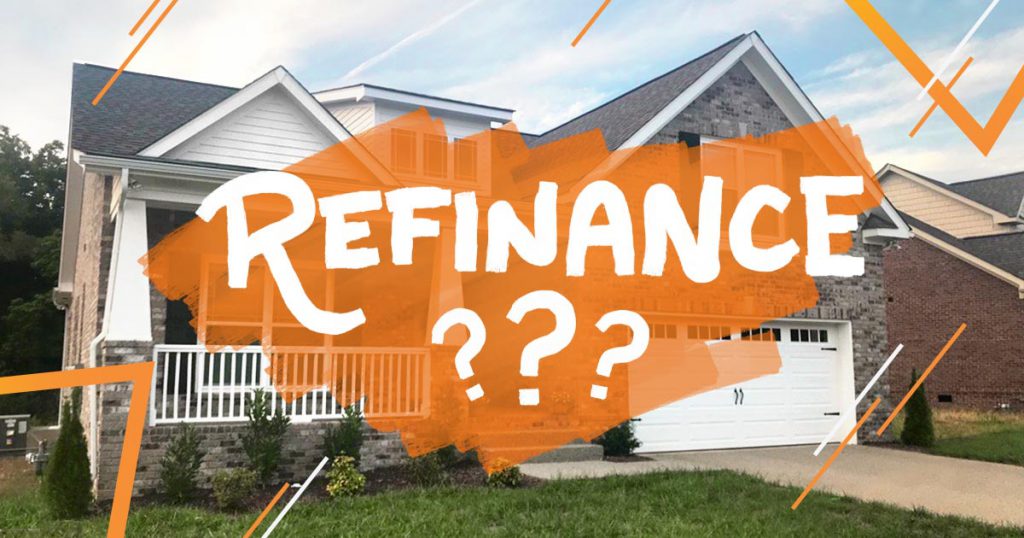
While many homeowners may have already missed the opportunity to refinance at lower interest rates, others can still benefit from refinancing today. According to mortgage analyst Black Knight, nearly one million homeowners will be able to lower their current rates by at least 0.75 percentage points. These homeowners could save an average of $316 a month, the equivalent of $3,729 a year.
Most mortgage experts recommend that you lower your interest rate by at least 0.75 percentage point (for example, from 6.50% to 5.75%) to recoup the cost of refinancing. Naturally, the greater the rate reduction, the more money you can save over time. Nevertheless, a 0.50 percentage point reduction may still be worth it.
With mortgage rates expected to continue rising in the near future, now might be a good time to review your options and see if refinancing your mortgage is right for you. If you don’t know where to start, the following steps will help you find the right direction.
If your mortgage rate is above 6.22%, now is probably a good time to refinance.
According to Fredymac, the average mortgage rate for a 30-year fixed-rate loan is 5.22%. If you can lower your current interest rate by even 0.5%, you might consider refinancing your mortgage.
If you have a $300,000 mortgage balance and you refinance a new loan with a 30-year maturity, reducing your interest rate from 6% to 5.50% will save you $95 a month or $1,140 a year. If you can lower that interest rate from 6% to 5%, you’ll save $188 a month or $2,256 a year.
You also don’t need to refinance a 30-year loan. If your finances have improved and you can afford higher monthly payments, you can refinance your 30-year loan into a 15-year fixed-rate mortgage, allowing you to pay off the loan faster and also pay less interest.
However, accounting for your monthly savings is only one part of your financial situation. You should also consider the cost of converting the loan and the time it takes to recoup the costs, which is the break-even point.
As with a home equity loan, you will have to pay the final costs of refinancing. These costs can include origination and application fees, appraisal and inspection fees, and title search fees. In general, closing costs can range from 3% to 6% of the total amount of the loan being refinanced.
You can determine your break-even point by dividing the total closing cost by the amount you want to save each month. The result is the number of months it takes to recoup the cost of refinancing and begin reducing your costs. The less time it takes to reach breakeven, the smarter it is to refinance your mortgage loan.
The last piece of the refinancing puzzle is balancing your financial goals and loan term changes. For example, if you get a 30-year mortgage for 10 years, refinancing with another 30-year loan means you get a 40-year mortgage for 40 years, not 30 years.
If your main reason is to lower your monthly payment, it makes sense to refinance another 30-year mortgage. However, if your goal is to save interest and shorten the term of your loan, refinancing a 30-year mortgage into a 15-year mortgage may be a better option if you can afford the higher monthly payments. Use a mortgage refinance calculator to find out what can help you.
Do mortgage refinance rates still remain low?
In March 2020, when the COVID-19 pandemic first occurred, the Federal Reserve Board developed a monetary policy to stabilize financial markets and mitigate the economic impact of the virus.
This included reducing the federal funds rate (the rate at which banks charge each other for short-term loans) to almost zero. The Fed also pledged to buy $40 billion worth of mortgage-backed securities and $80 billion worth of Treasury bonds and other financial products every month. The move lowered mortgage rates to 3 percent for the first time in history.
Nonetheless, employment improved, but as inflation rose, the central bank began to back away from tightening monetary policy beginning in late 2021. The Fed cut MBS purchases by $10 billion and $5 billion each month. In June 2022, Fed policymakers announced a 0.75 percentage point increase in the federal funds rate and expected further rate hikes this year.
Since the beginning of 2022, that percentage has increased significantly and now averages 5.22%. If you are still considering refinancing, it may be best to take action sooner rather than later. Most economists agree that mortgage rates will continue to rise.
How to know when to refinance your mortgage
Here are a few key things to consider when deciding to refinance a secured loan.
- Your credit rating. Most mortgage lenders require a credit score of at least 620 to qualify for a mortgage refinance. To get the lowest interest rate on a secured loan, you will need 740. Also, keep in mind that if your credit score is lower than when you currently get your mortgage, you may not qualify for the same favorable interest rate as before.
- Total Debt Repayment Factor (DTI). For conventional loans, some borrowers will run as high as 43% DTI. FHA loans will usually be slightly higher, taking a DTI of 50%. But as a rule of thumb, the lower the better.
- How long will you be here? If you refinance, you must pay closing costs. If you plan to move in the near future, you may not make a profit or a loss.
- How much equity is in your home. You usually need at least 20% of your equity to get a mortgage refinance.
Don’t try to time the market. Expecting fluctuations in interest rates is as unsettling as timing in the stock market. If you can get closer to your financial goals by saving money or refinancing today, don’t wait to find out what your mortgage rate will be tomorrow.



GIPHY App Key not set. Please check settings